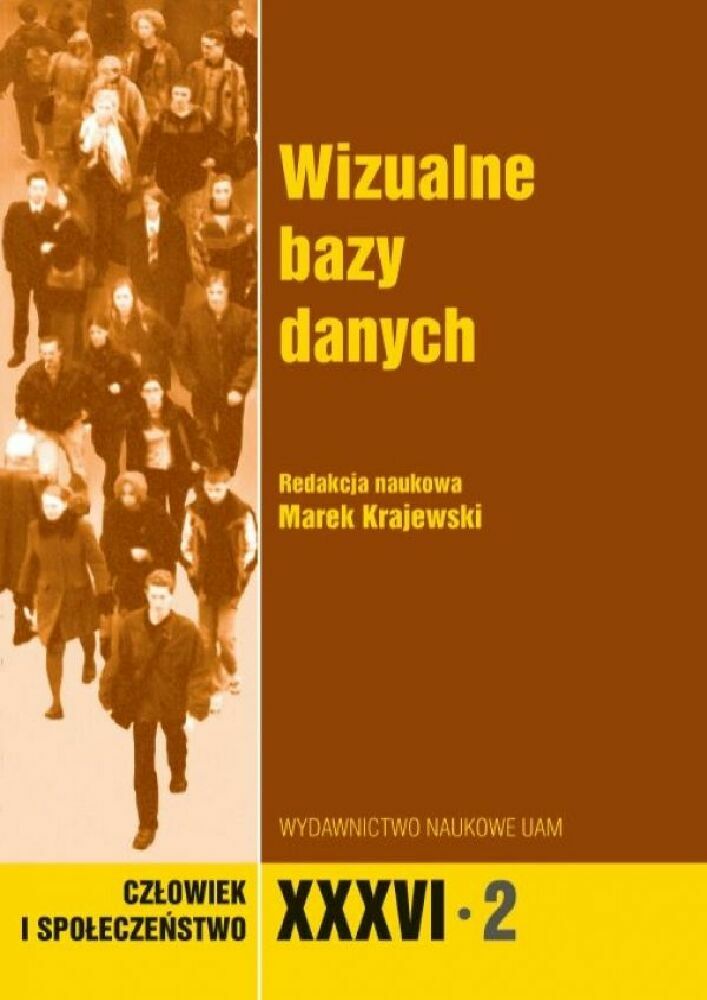Abstrakt
The article presents possibilities and limitations of quantitative analysis of databases of visual data (in this
case it is analysis of database of photos). The axis of the article is analysis of database of “Invisible city”
project (web page: http://www.niewidzialnemiasto.pl/), its first goal was photographic documentation of
grassroots forms of modification of city space done by inhabitants of large Polish cities (broadly speaking
this informal activity reduces to beautification of life environment and to improvement of its functionality).
The moment the database of “Invisible city” project had grown to the size of several thousands of pictures, the idea arose that collected material can be analyzed in a quantitative way, which would enable more general, systematic view on phenomenon interesting for researchers.
In the article, firstly, there are presented tools, scheme and general results of analysis of photos gathered in
database of “Invisible city” project, here, in other words, is presented the scheme of transformation of
visual data to numerical data. Secondly, there are identified moments where the scheme of quantitative
analysis of “Invisible city” fails, where it may result in information loss, doesn’t give us one hundred
percent certainty for obtained results (problems of first kind are connected with dynamics of the formation
and growth of database, problems of second kind arise at the stage of pictures analysis). Thirdly, there is
proposed and described one potential master (meta)analysis, that we can impose on analysis of database
of visual data of “Invisible city” project in order to check its accuracy. Despite of mentioned above problems,
difficulties associated with the fact that database of “Invisible city” was created spontaneously to some extent (it was balancing between database and photo gallery sometimes), results of quantitative analyzes are reliable, they reconstruct the dynamics of invisible city with accuracy and give strong foundation for in-depth description.
Licencja
1. W momencie złożenia pracy celem rozpoczęcia postępowania w sprawie publikacji, Licencjodawca, zwany dalej Autorem, akceptuje wszystkie zasady umieszczone na stronie internetowej czasopisma “Człowiek i Społeczeństwo”, udzielając Licencjobiorcy, zwanego dalej Wydawcą, niewyłącznej i nieodpłatnej licencji na korzystanie z Utworu. Licencja zakłada tym samym brak ograniczeń terytorialnych, czasowych oraz ilościowych na następujących polach eksploatacji (art. 50 ustawy z dnia 4 lutego 1994 r. o prawie autorskim i prawach pokrewnych):
a. utrwalanie Utworu;
b. zwielokrotnienie Utworu drukiem i w wersji cyfrowej;
c. wprowadzenie do obrotu, użyczenie lub najem oryginału/zwielokrotnionych egzemplarzy Utworu;
d. publiczne wykonanie, wystawienie, wyświetlenie, odtworzenie oraz nadawanie i reemitowanie, a także publiczne udostępnianie Utworu w taki sposób, aby każdy mógł mieć do niego dostęp w miejscu i w czasie przez siebie wybranym;
e. włączenie Utworu w skład utworu zbiorowego;
f. wprowadzenie Utworu w postaci elektronicznej na platformy elektroniczne lub inne wprowadzenie Utworu w postaci elektronicznej do Internetu, Intranetu, Extranetu lub innej sieci;
g. rozpowszechnianie Utworu w wersji elektronicznej w Internecie, Intranecie, Extranecie lub innej sieci, w pracy zbiorowej, a także samodzielnie w formule Open Access w oparciu o licencję Creative Commons Uznanie autorstwa 4.0 Międzynarodowa Licencja Publiczna (CC BY 4.0), a także inną wersję językową tej licencji, lub którąkolwiek późniejszą wersję tej licencji.
2. Założenia licencji Creative Commons Uznanie autorstwa 4.0 Międzynarodowa Licencja Publiczna (CC BY 4.0), udzielają Wydawcy upoważnienia do kopiowania, zmieniania, rozprowadzania, przedstawiania i wykonywania Utworu jedynie pod warunkiem uznania autorstwa.
3. Wraz z dostarczeniem Utworu, Autor zobowiązuje się do wypełnienia, podpisania oraz odesłania skanu umowy
